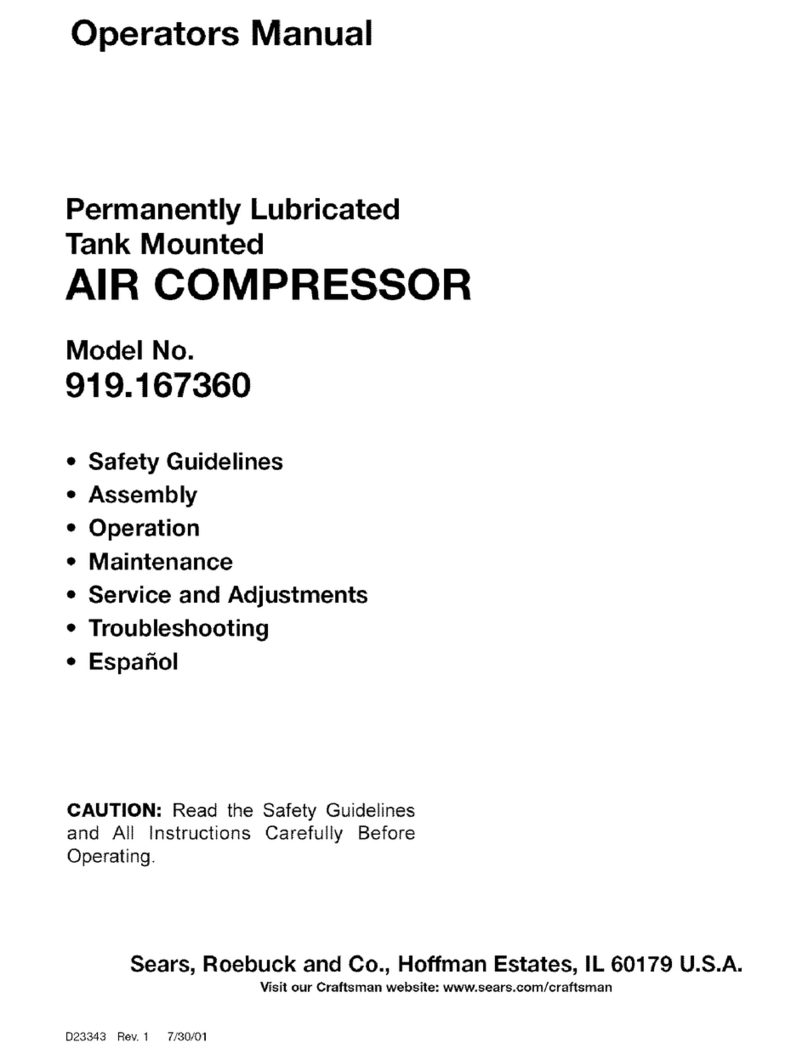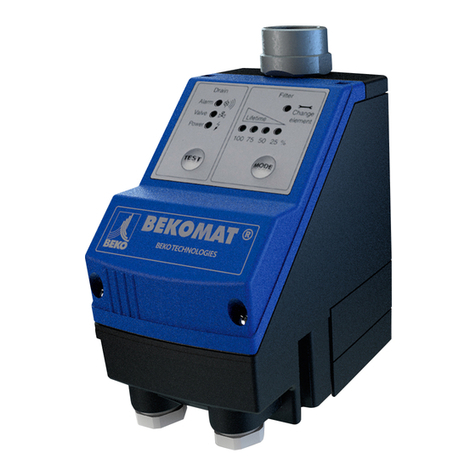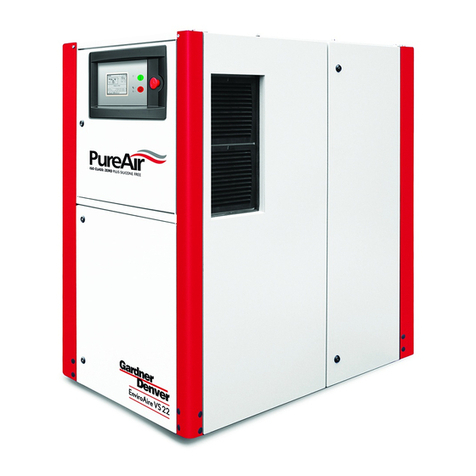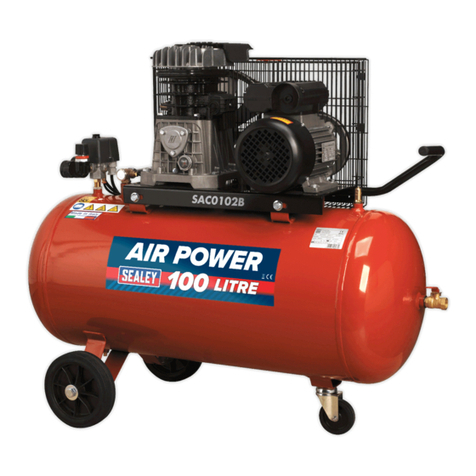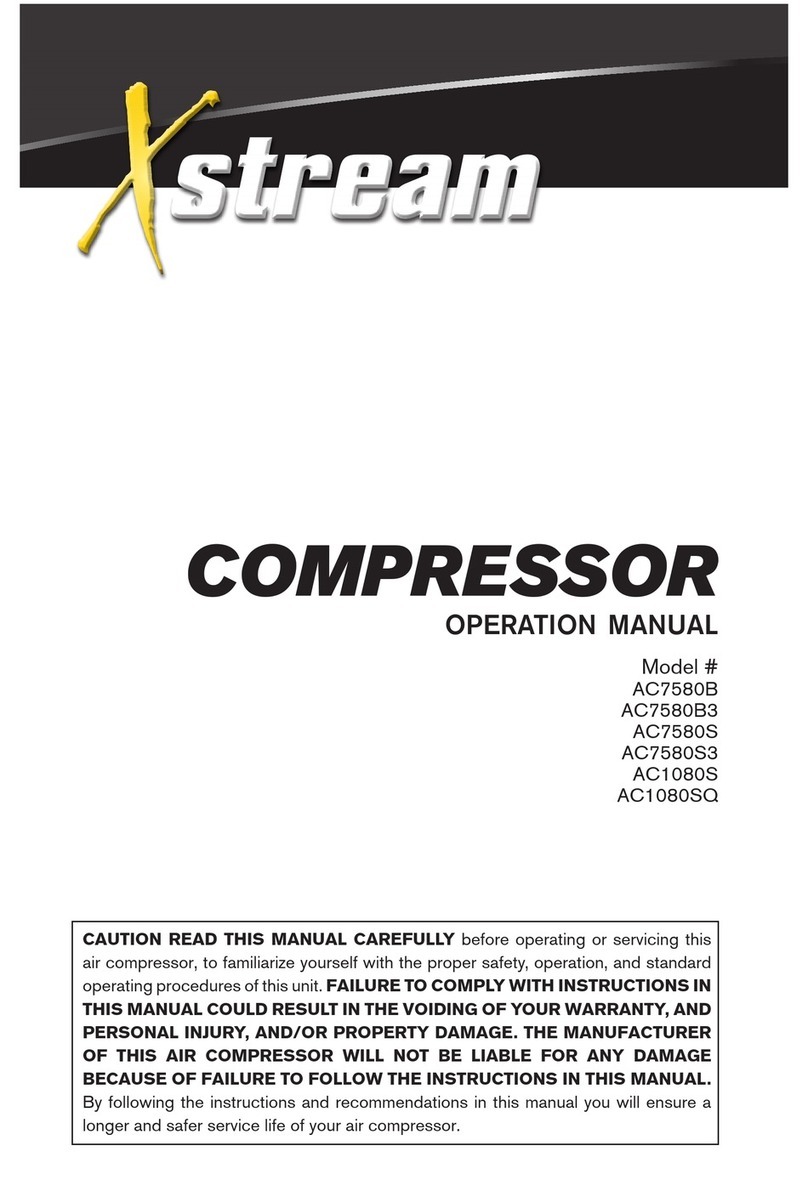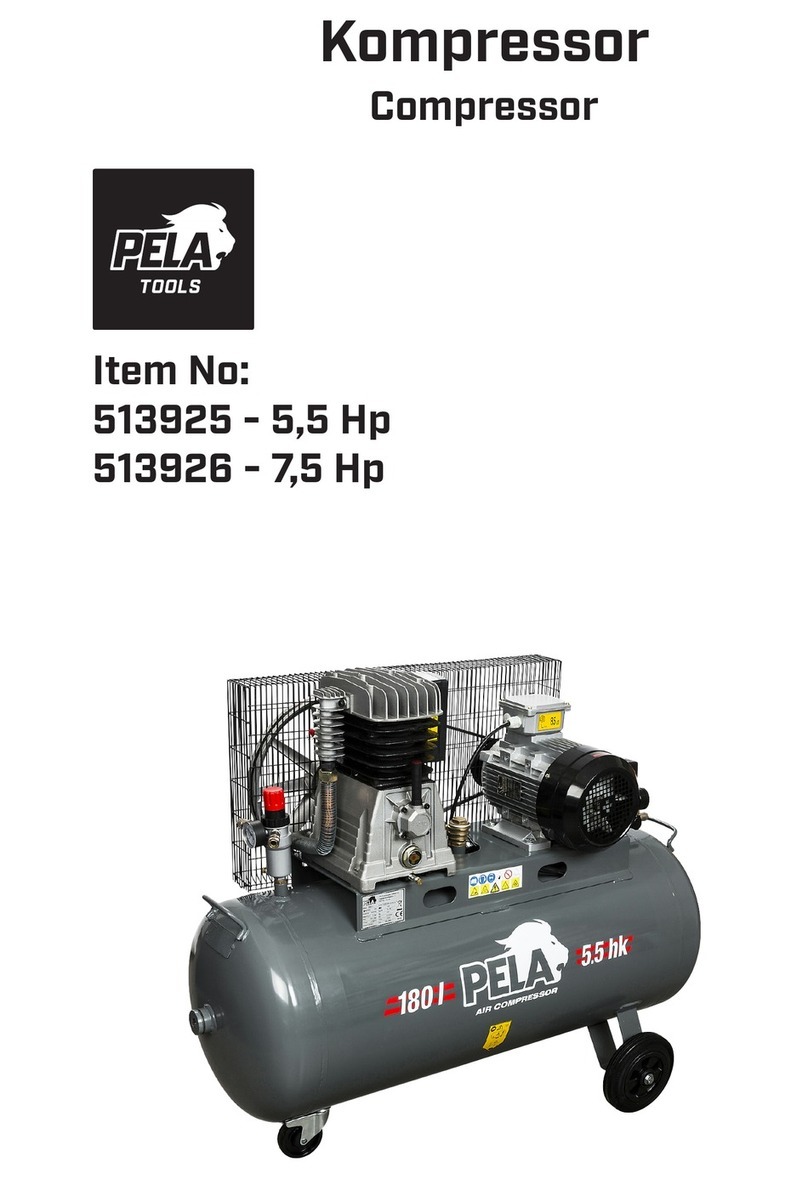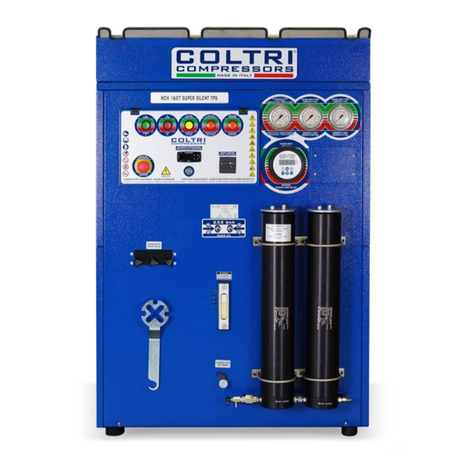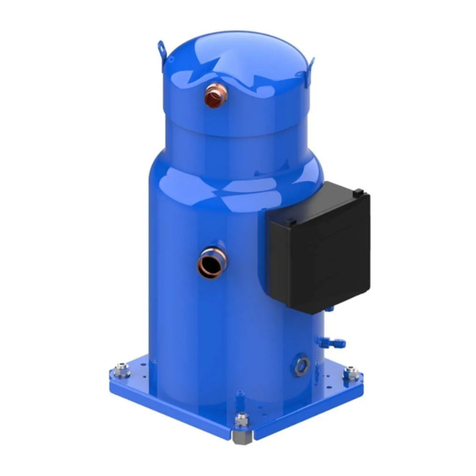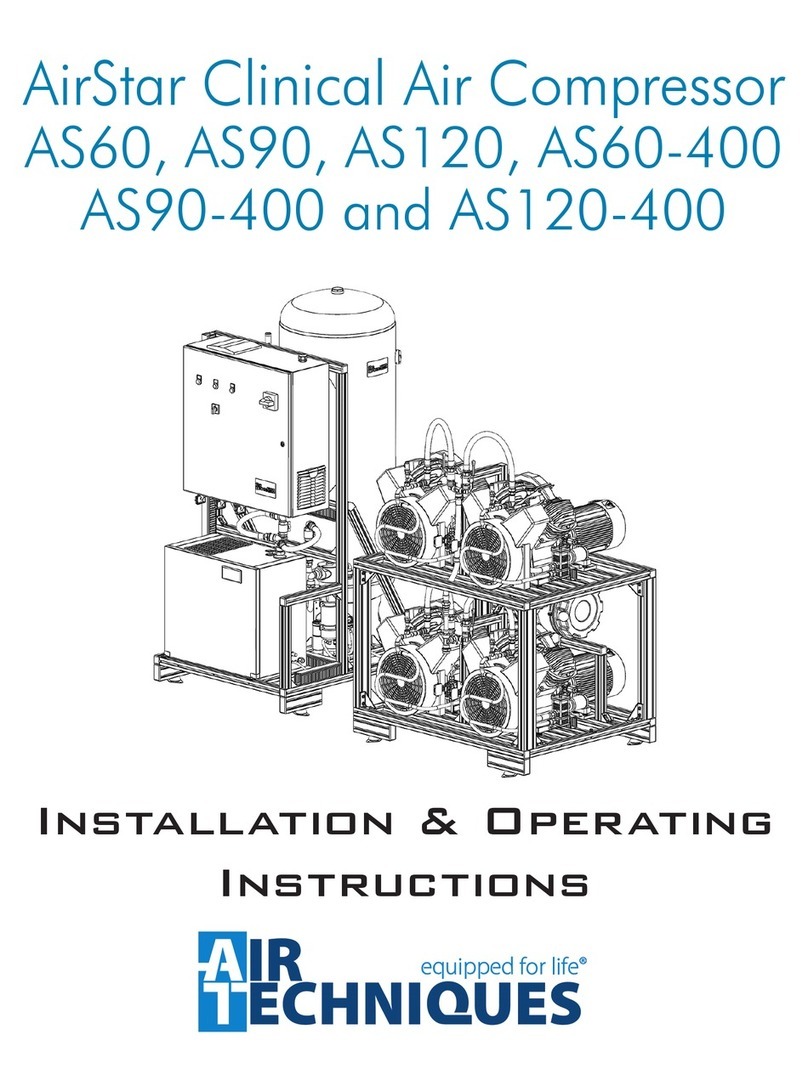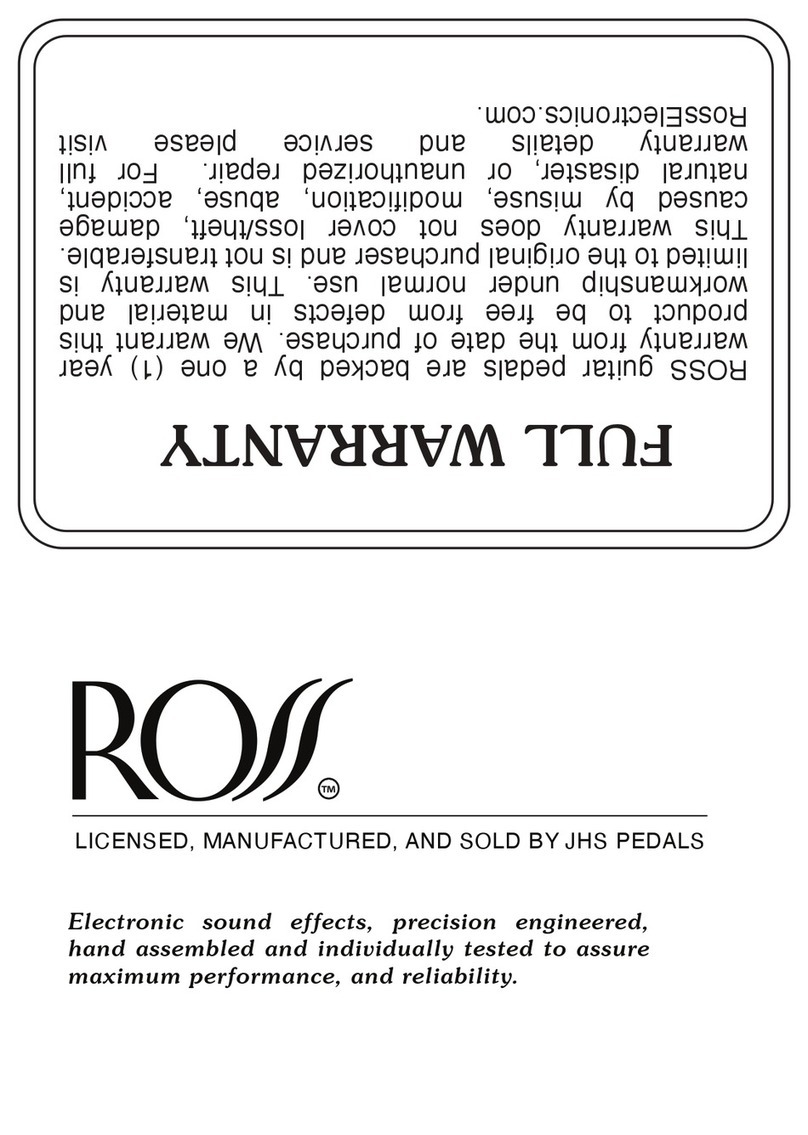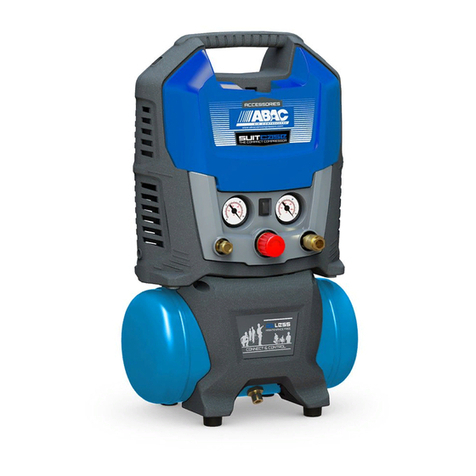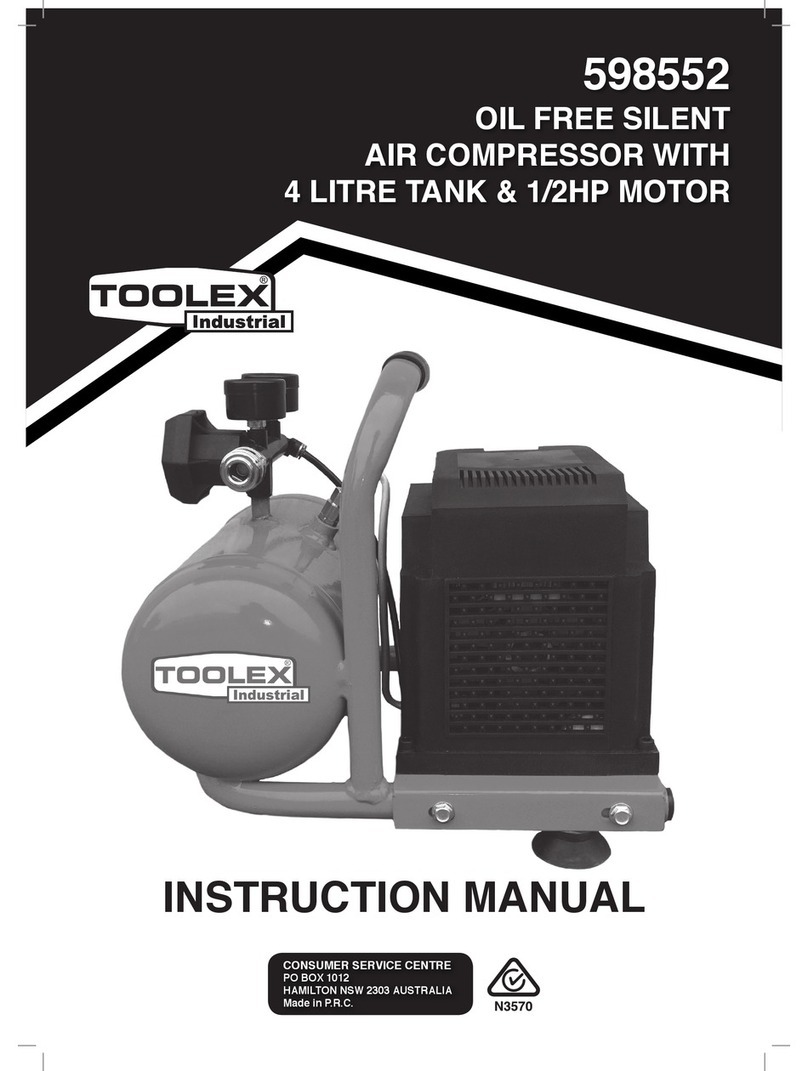Daily Start-Up Procedures
1. Set the Auto-On/Off lever to the off position.
2. Check the air compressor visually for any
damage or obstruction.
3. Close the drain valve.
4. Plug the power cord into the proper
receptacle.
5. Turn the Auto-on/Off lever to the On-Auto
position and the compressor will start and build
air pressure in the tank to cut-out pressure and
then shut off automatically.
6. Adjust the regulator to a PSI setting that
is needed for your application and be sure
it is within the safety standards required to
perform the task. If using a pneumatic tool, the
manufacturer should have recommendations in
the manual for the particular tool on operating
PSI settings.
7. The air compressor is now ready for use.
MAINTENANCE
NOTE: Qualied service personnel should
perform any service procedure not covered in
the maintenance schedule below.
ITEMS TO CHECK/CHANGE Before Each
Use or Daily
Check Tank Safety Valve X
Overall Unit Visual Check X
Check Air Filter (
(More frequently in dusty or humid
environments)
X
To ensure efcient operation and longer life of
the air compressor unit, a routine maintenance
schedule should be followed. The following
schedule is geared toward a consumer whose
compressor is used in a normal working
environment on a daily basis. If neces¬sary,
the schedule should be modied to suit the
con¬dition under which your compressor is
used. The modications will depend upon the
hours of operation and the working environment.
Air compressors used in an extremely dirty and/
or hostile environment will require a greater
frequency of all maintenance checks.
Daily Shut-Down Procedures
1. Set the Auto-On/Off lever to the Off position.
2. Unplug the power cord from the receptacle.
3. Set the outlet pressure to zero on the
regulator.
4. Remove any air tools or accessories.
5. Open the drain valve allowing air to bleed
from the tank. After all of the air has bled from
the tank, close the drain valve to prevent debris
buildup in the valve.
When draining the tank, always use ear and
eye protection. Drain the tank in a suitable
location; condensation will be present in most
cases of draining.
Water that remains in the tank during storage
will corrode and weaken the air tank, which
could cause the tank to rupture. To avoid serious
injury, be sure to drain the tank after each use or
daily.
The air compressor should be turned off and
unplugged from the power source before any
maintenance is performed as well as the air
bled from the tank and the unit allowed time to
cool. Personal injuries could occur from moving
parts, electrical sources, compressed air or hot
surfaces.
STORAGE
For storing the air compressor, be sure to do the
following:
1. Turn the unit off and unplug the power cord
from the receptacle.
2. Remove all air hoses, accessories, and air
tools from the air compressor.
3. Perform the daily maintenance schedule.
4. Open the drain valve to bleed all air from the
tank.
5. Close the drain valve.
6. Store the air compressor in a clean and dry
location.
OPERATION PROCEDURES
6.










